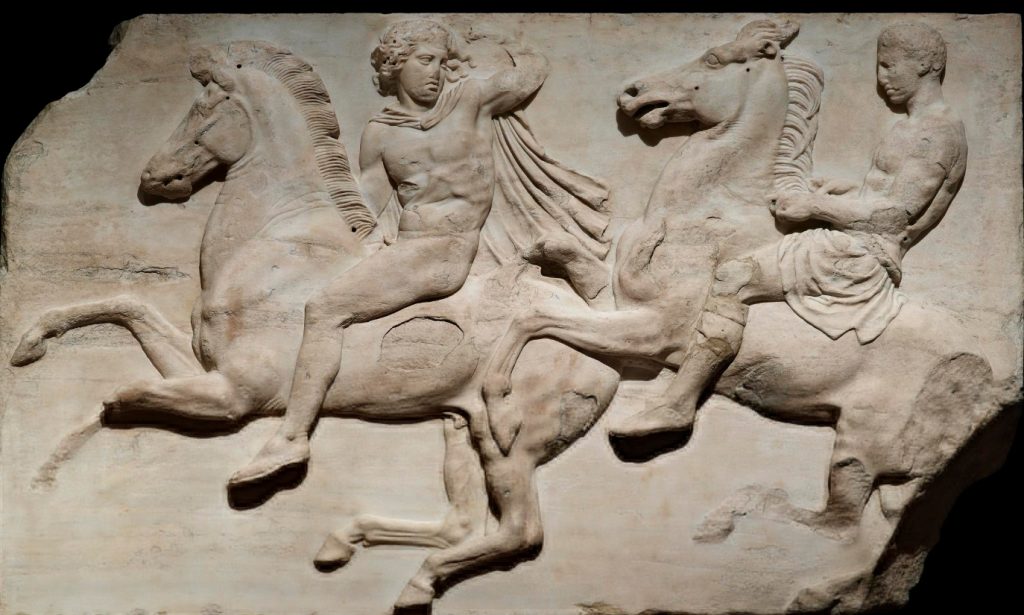The Parthenon is one of the most famous buildings in ancient Greece, and its relief art is still a classic example in the field of architecture and sculpture. As the core of the Acropolis of Athens, the Parthenon is not only the pinnacle of architectural design, but also famous for its reliefs, showing the outstanding achievements of the ancient Greeks in the integration of sculpture and architecture.
The relief art of the Parthenon is distributed in different parts of the temple, especially the famous triangular pediment sculptures on the east and west sides. These reliefs tell stories such as the dispute between Athena and Poseidon in Greek mythology and the celebration of Pan. In these reliefs, Greek gods are presented in an elegant and solemn posture, fully demonstrating the ancient Greek sculptors’ deep understanding of human structure and their high mastery of carving skills. Every detail of the relief is carefully designed to form a perfect combination with the magnificent structure of the building itself, making architecture and art complement each other.
These reliefs are not only a symbol of Greek culture, but also a practical application of ancient Greek sculpture art in architecture. Architects can learn from this approach in modern design, by embedding sculpture art into architecture to enhance the cultural connotation and aesthetic effect of the building. For example, in some modern architectural projects, the elements of the Greek goddess statue are cleverly integrated into the facade design, which not only enriches the visual level of the building, but also pays tribute to the ancient Greek culture.
The Parthenon relief is not only a work of art, but also a masterpiece of the perfect fusion of architecture and sculpture, which has a profound impact on the architectural design of later generations.

